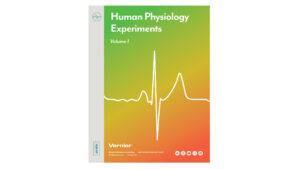Introduction
Almost all exercise machines tell you how many calories you have consumed after a period of exercise. Modern fitness trackers and fitness software applications also perform calculations on how many calories you consume after exercise. Most of these calculations are based on the subjects age and weight, but all of these calculations use heart rate. Humans rely primarily on aerobic metabolism. The amount of oxygen that you consume is related to how quickly your heart can pump blood to your lungs and then to the rest of your body. As a result, tracking heart rate is an excellent way to estimate calorie consumption.
The calories you see listed on food packaging are actually kilocalories, but are referred to as Calories. An average person should consume a minimum of about 2,000 Calories per day. Fitness trackers and exercise machines report the estimated number of Calories consumed during exercise. In this activity, you will calculate the number calories per hour you would consume performing different activities while monitoring your heart rate.
Objectives
- Determine the effect of exercise on heart rates.
- Calculate the estimated calories burned as a function of heart rate, age, body weight, and sex.
Sensors and Equipment
This experiment features the following sensors and equipment. Additional equipment may be required.
Correlations
Teaching to an educational standard? This experiment supports the standards below.
- International Baccalaureate (IB)/Sports, Exercise, and Health Science
- 3.3 Nutrition and energy systems
Ready to Experiment?
Ask an Expert
Get answers to your questions about how to teach this experiment with our support team.
- Call toll-free: 888-837-6437
- Chat with Us
- Email support@vernier.com
Purchase the Lab Book
This experiment is #14 of Human Physiology Experiments: Volume 1. The experiment in the book includes student instructions as well as instructor information for set up, helpful hints, and sample graphs and data.


